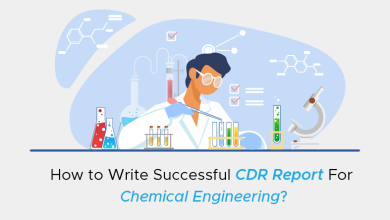Blockchain Applications Expand Due to New Database Innovations

Blockchain is a relatively new technology that is most recognised for enabling the use of cryptocurrencies such as Bitcoin and Ether. However, blockchain technology can provide security for a variety of applications, ranging from medical record privacy restrictions to preventing vote tampering. Finally, blockchain is a decentralised, encrypted database of contracts. Blockchain technology acts as an incorruptible bookkeeping/contract platform that enforces transparency. By addressing financial, institutional, and political corruption, blockchain technology has the potential to fundamentally alter how businesses are conducted, to effect social change, and to protect human rights.
Brian Platz, co-CEO of Fluree, stated in a DATAVERSITY® interview on blockchain:
“In terms of potential cost savings, blockchain technology has the potential to save businesses thousands, if not millions, of dollars in data protection, information management, and compliance. Due to its immutability, it takes tamper-resistant data to an entirely new level. Its real-time digitalization of transactions can improve the efficiency and transparency of company processes.”
A blockchain, in technical terms, is a collection of documents, referred to as blocks, that are linked via encryption. It is a distributed ledger that is open, transparent, and capable of documenting the transactions of two parties in a verifiable, efficient, and permanent manner. Each block contains a timestamp, the previous block’s cryptographic hash, and transaction data. The process is supposed to be “modifiable,” and is often managed by a network that adheres to stringent rules for inter-node communication and block validation.
After data is collected, Platz explained, no single block may be amended retroactively unless all succeeding blocks are altered as well. This requires the network’s majority approval. With the rise of cryptocurrencies, publicly accessible blockchains have gained popularity. Additionally, private blockchains have been suggested for commercial communications.
Concerns About Blockchain Privacy
According to Platz, the information stored in a blockchain exists as a shared and continuously updated “database.” This blockchain database is not maintained in a single area, but in several locations, which makes the records easily accessible and verifiable. There is no centralised repository of data that is susceptible to hackers and corruption. The database is concurrently stored and updated on millions of computers, with the data being transparently accessible and readable by anybody with an internet connection.
The challenge of incorporating blockchain technology into corporate applications is a typical security concern for firms considering the technology. Separating a business’s confidential internal operations from its public web records might present major problems (and overhead costs).
Adapting a computer system to work with blockchain technology can be challenging and costly. Flip Filipowski, Fluree’s other co-CEO, claimed, “Storing a gigabit of data on Ethereum would cost you $10 million.” And a gigabit of data is not a large amount.”
FlureeDB
FlureeDB is a scalable, cloud-based database that simplifies and reduces the cost of working with blockchain technology. FlureeDB combines the characteristics of both graph and document databases to produce a hybrid database that is compatible with blockchain technology. This enables companies and developers to combine the capabilities of blockchain with apps. Additionally, FlureeDB makes use of a technology known as “Composite Blockchain Consensus.”
According to Platz, Composite Blockchain Consensus offers a variety of “blockchain consensus” elements and applies them based on the desired transaction characteristics. For instance, low-consensus requirements (in-house transactions) will be processed rapidly, whereas high-consensus requirements will make use of decentralised public records and verifications. FlureeDB queries permit the creation of “joins” between many databases, allowing for the querying of numerous consensus databases as a single database system.
Additionally, FlureeDB supports a number of important features. The Fluree UI interface enables researchers to view their data, which simplifies database management, block examination, and schema exploration.
Additionally, FlureeDB eliminates the requirement to decide whether to construct and use a graph or document database. The GraphDB & DocumentDB functionality decouples the query engine from the blockchain transactor. Additionally, it supports multiple database types concurrently. This enables very low-latency horizontal scaling requests.
Additionally, the database has a capability for time travel. FlureeDB converts transactions to chained blocks, each of which represents a single point in time. With each query, the query engine creates a snapshot of the data for any block or time period. Platz stated the following about Fluree DB’s take on time travel:
“FlureeDB is aware of what has been updated and takes care of it automatically. Time travel is one of the unique features we’ve provided. It enables clients to rewind the entire programme to any point in time. And this resolves a slew of issues. It can deliver project budgets on a regular basis or at the start of each month. Alternatively, it might deliver sales work assets at the start of each quarter. Fluree DB is capable of rewinding the entire programme to a certain point in time. You don’t even need to know in advance what data we’re going to summarise, because every piece of data is already there.”
FlureeDB’s multi-consensus approach enables organisations to construct an internal database that maintains entire privacy or a completely decentralised database that maintains complete transparency.
Blockchain Technology and Asset Management
Traditional asset management techniques can be dangerous and expensive, particularly for overseas transactions. Each party, such as custodians, brokers, and managers, maintains their own records under the usual, traditional approach. This increases the likelihood of inefficiencies and human error. Platz asserts:
“By encrypting records and allowing for numerous copies, a blockchain ledger removes errors. The distributed ledger technology streamlines the process and eliminates the need for intermediaries.”
Calastone, a worldwide funds transaction network, announced the migration of its global funds transaction network to a fully blockchain-enabled architecture. It has been experimenting with blockchain technology and intends to complete the shift in the near future. As expenses rise as a result of operational and regulatory challenges and the implementation of GDPR, Calastone has selected blockchain as a means of cost reduction while maintaining regulatory transparency and speed.



